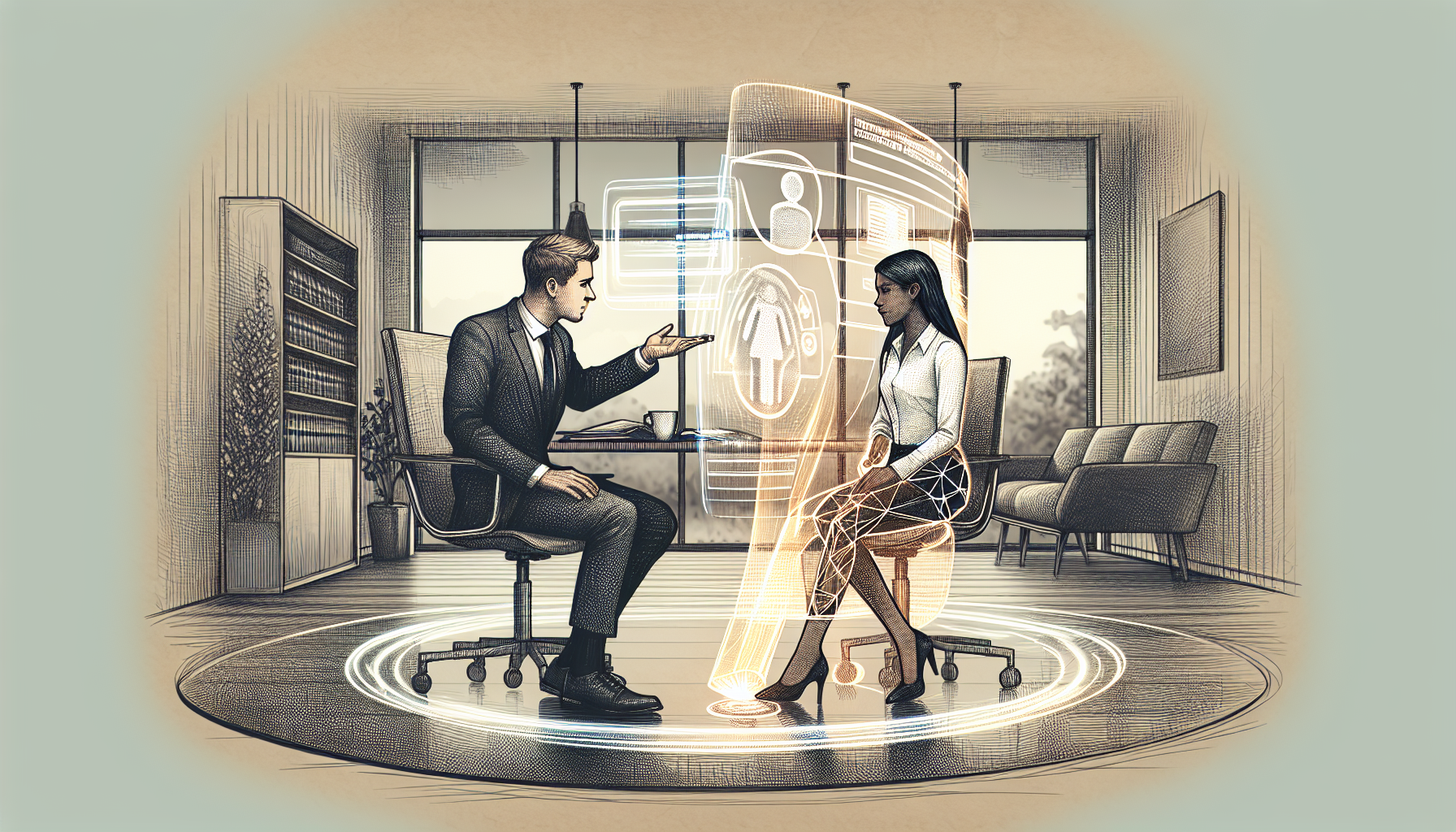
Setting the Stage: The Intersection of AI and Family Law
In an era where artificial intelligence (AI) is reshaping numerous fields, the legal profession stands at a crucial intersection. Specifically, the challenges and demands of family law—including its intricate documentation and extensive case management—present a fertile ground for AI-driven optimization. Leveraging AI, particularly advanced language models like ChatGPT, can significantly enhance the efficacy and precision of paralegals when drafting legal responses and preparing documents. Optimizing family law responses using AI not only streamlines the workflow but also ensures meticulous attention to detail, potentially transforming the way legal services are rendered.
As we delve into the interplay between AI and family law, it’s essential to understand the capabilities of ChatGPT and the role it can play in legal practices.
Understanding ChatGPT: A Brief Primer on Capabilities
ChatGPT, developed by OpenAI, is a sophisticated AI language model renowned for its versatile functionalities. It excels in generating human-like text based on the prompts it receives. For legal professionals, especially those in family law, ChatGPT offers noteworthy features:
- Document Drafting: From legal briefs to motions, ChatGPT can assist in crafting well-structured documents.
- Template Generation: The AI can create templates for recurring documents, making repetitive tasks less tedious.
- Legal Research Assistance: ChatGPT can provide summaries of legal topics, aiding in quick research and reference.
- Client Communication: Initial drafts of emails and letters to clients can be generated efficiently.
These capabilities, when harnessed correctly, provide a significant boost to paralegals handling family law cases. Next, we’ll explore the foundational element of working with ChatGPT: crafting the perfect prompt.
Also read:
Crafting the Perfect Prompt: Essentials for Legal Accuracy
To leverage ChatGPT effectively, the key lies in crafting specific, clear, and contextual prompts. Vague or ambiguous instructions often yield unsatisfactory results, whereas well-designed prompts can lead to precise and useful outputs. Here are some guidelines to keep in mind:
- Be Specific: Specify the type of document or response needed. For example, instead of “Help me draft a document,” use “Draft a motion for modification of child custody.”
- Provide Context: Offer contextual details relevant to the case. Including facts and key points helps in generating a more tailored response.
- Include Legal Framework: Mention any statutes, laws, or precedents if applicable. This helps the AI understand the legal backdrop.
- Define Structure: Clearly outline the desired structure, such as introduction, body, and conclusion.
- Request Formatting: Indicate if specific formatting is needed, such as bulleted lists or headings.
By adhering to these guidelines, paralegals can significantly enhance the accuracy of outputs generated by ChatGPT. This foundational understanding paves the way for more nuanced approaches, as we’ll discuss next.
Also read:
Nuanced Prompt Techniques: Elevating Legal Responses
Once the basics of prompt crafting are established, paralegals can employ advanced techniques to handle the complexity of family law scenarios. Here are some examples illustrating creative and nuanced prompts:
- Multi-Part Prompts: Break down complex requests into multiple parts for more detailed responses. For instance:
- “First, outline the legal grounds for child custody modification in our state. Second, draft a motion integrating these grounds with the following facts: [Insert Facts].”
- Scenario-Based Prompts: Utilize hypothetical scenarios to guide the AI in understanding the context. For example:
- “Imagine a scenario where a non-custodial parent seeks increased visitation rights. Draft a response affidavit considering the following arguments: [Insert Arguments].”
- Precision Directives: Instruct ChatGPT to follow specific language or tone. For example:
- “Draft a letter to a client informing them of a court date change, maintaining a professional yet empathetic tone.”
- Incorporating Legal Precedents: Include reference requests for legal precedents:
- “Draft a brief citing relevant case law supporting joint custody arrangements. Summarize key cases such as [Case A], [Case B].”
Employing these nuanced techniques elevates the quality of legal responses, ensuring they are both comprehensive and precise. The next step involves tailoring these AI-generated outputs to fit specific legal contexts.
Also read:
Tailoring ChatGPT Outputs: From General Advice to Specific Legal Contexts
Even with well-crafted prompts, AI-generated responses may initially be broad. It’s crucial for paralegals to refine these outputs to fit the specific nuances of their cases. Here are strategies to achieve this:
- Edit for Specificity: Customize the generated draft by incorporating case-specific details. Modify general statements to reflect the particular circumstances of the case.
- Cross-Reference Legal Standards: Ensure the output aligns with local and jurisdictional legal standards. Verify and integrate relevant statutes and case law.
- Client Personalization: Amend the output to reflect the client’s situation and preferences. Personal touches can make legal documents more relatable and empathetic.
- Ensure Accuracy: Manually review the facts, figures, and legal citations for precision, ensuring no discrepancies remain.
These strategies ensure that the AI-generated text transforms from a general response to a legally robust document tailored to specific cases. Now, let’s explore how this refinement process integrates into document preparation.
Also read:
Speed and Precision: Streamlining Document Preparation
Integrating ChatGPT into everyday tasks can dramatically expedite document preparation while maintaining high precision. Here are practical tips for paralegals:
- Batch Processing: Use ChatGPT to draft multiple documents in one session. For instance, generate several drafts of similar legal notices or motions at once.
- Template Utilization: Create and save templates for commonly used documents. This reduces repetitive prompting and makes minor customizations easier.
- Real-Time Editing: Leverage ChatGPT’s capabilities for on-the-fly edits during client consultations. Immediate adjustments can be made, enhancing client satisfaction.
- Collaboration Tools: Integrate AI-generated drafts with collaborative tools like Google Docs or Microsoft Teams for team reviews and iterative improvements.
- Task-Specific Focus: Assign ChatGPT to specific, repetitive tasks, such as initial case summaries or data extraction, freeing up time for more complex legal analysis.
By consistently applying these tips, paralegals can increase productivity and accuracy in document preparation, ultimately offering better service to clients. However, it’s important to always consider the ethical implications of using AI in legal practice.
Also read:
Ethical Considerations and Best Practices
The integration of AI in legal work raises several ethical considerations. To ensure responsible use, consider these best practices:
- Human Oversight: Always have a legal professional review AI-generated drafts to ensure correctness and adherence to legal standards.
- Confidentiality: Ensure that any data shared with AI tools complies with client confidentiality agreements and relevant data protection laws.
- Transparency: Inform clients when AI is used in drafting or preparing their documents, maintaining transparency and trust.
- Continuous Learning: Stay updated with AI advancements and legal tech to responsibly leverage new tools and features.
By adhering to these ethical standards and best practices, legal professionals can optimally benefit from AI while safeguarding their professional integrity.
Also read:
Final Thoughts: Embracing AI for Future-Ready Legal Work
AI is poised to reshape the legal landscape, making processes more efficient and precise. By embracing tools like ChatGPT, legal professionals, especially in family law, can stay ahead of the curve. Continuous learning and adaptation will be key to maximizing these benefits, ensuring that the evolving role of AI complements the irreplaceable expertise of human judgment and empathy.


